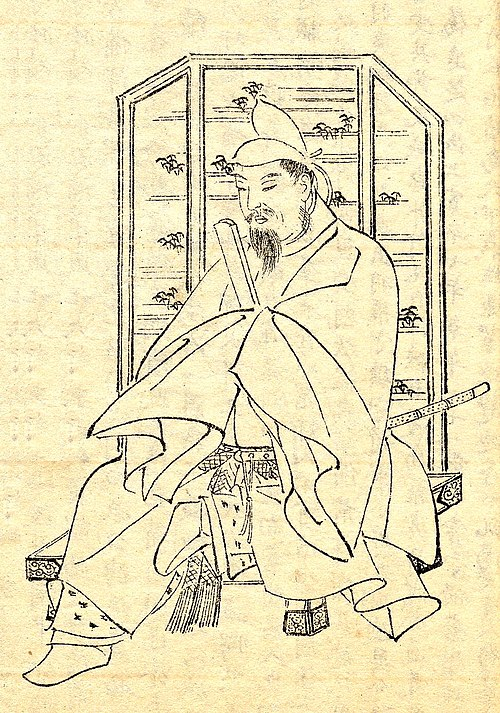On Timeless Wisdom: Ninth-Century Japanese Culture Embedded in Dabney Garden
In my time at Caltech, I have found that scientists love to both work hard and play hard. While preparing for a party and hanging decorations at Dabney Garden last Fall, I noticed a statue of the Japanese deity Tenjin, on which I placed an Earth-shaped lantern. This man sitting on a yak with a Japanese name was of particular interest to me, as I have studied the Japanese language for over 10 years. Why had this statue been placed in one of the most historic spaces on campus? Why is Tenjin important?
I found that the statue originally belonged to the Bernheimer Gardens, an Asian-inspired public space in the Pacific Palisades owned by Adolph L. Bernheimer in the first part of the 20th century. It was sold at auction when the garden closed due to landslides, and was later donated to Caltech by Dr. Edwin H. Schneider in 1967.

A portrait of Sugawara no Michizane by Kikuchi Yōsai.
Tenjin, known during his lifetime as Sugawara no Michizane, was a scholar, politician, and philosopher in 9th-century Japan, and was recognized as one of the best poets of his era. After his death, he was honored as the Shinto deity Tenman Daijizai Tenjin (天満大自在天神) in Japan during the Edo period (c.1600-1850). He is also connected with good luck on exams, and many students pray to him for academic success. \
This statue represents to us the importance of recognizing the role of a well-rounded education, and how our work in a technical environment can be enhanced by engaging the right hemisphere of our brain. In addition, how would it hurt to ask for a little extra luck during exam week?
Furthermore, science and religion do not have to be mutually exclusive; one great example of this is the Vatican observatory in Vatican City. I had the pleasure of attending a lecture and dinner two years ago on Mount Wilson with Br. Guy Consolmagno, the director of the Vatican Observatory, and I learned a lot about the intersection and relationship between the two. This topic will be further explored in my next article.